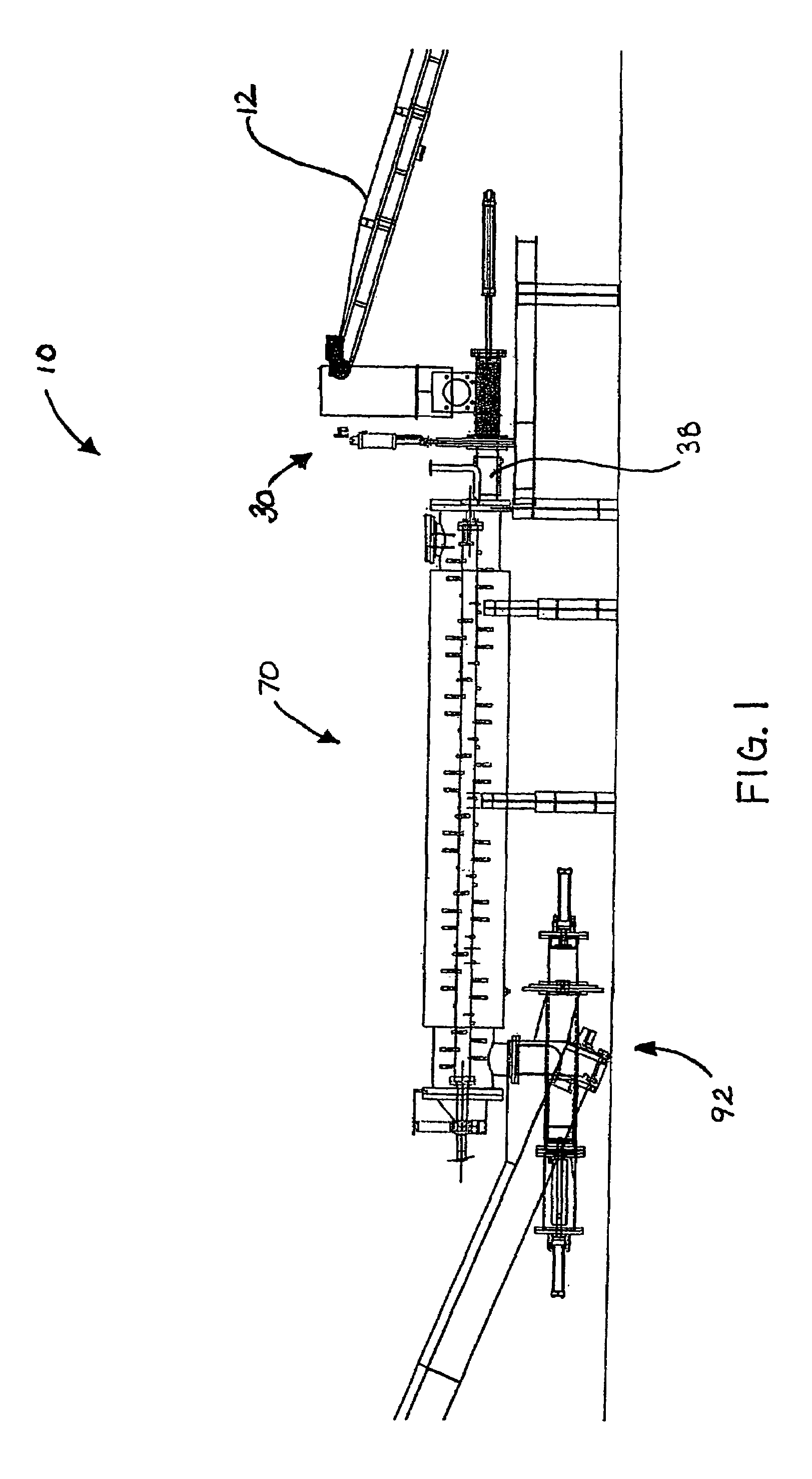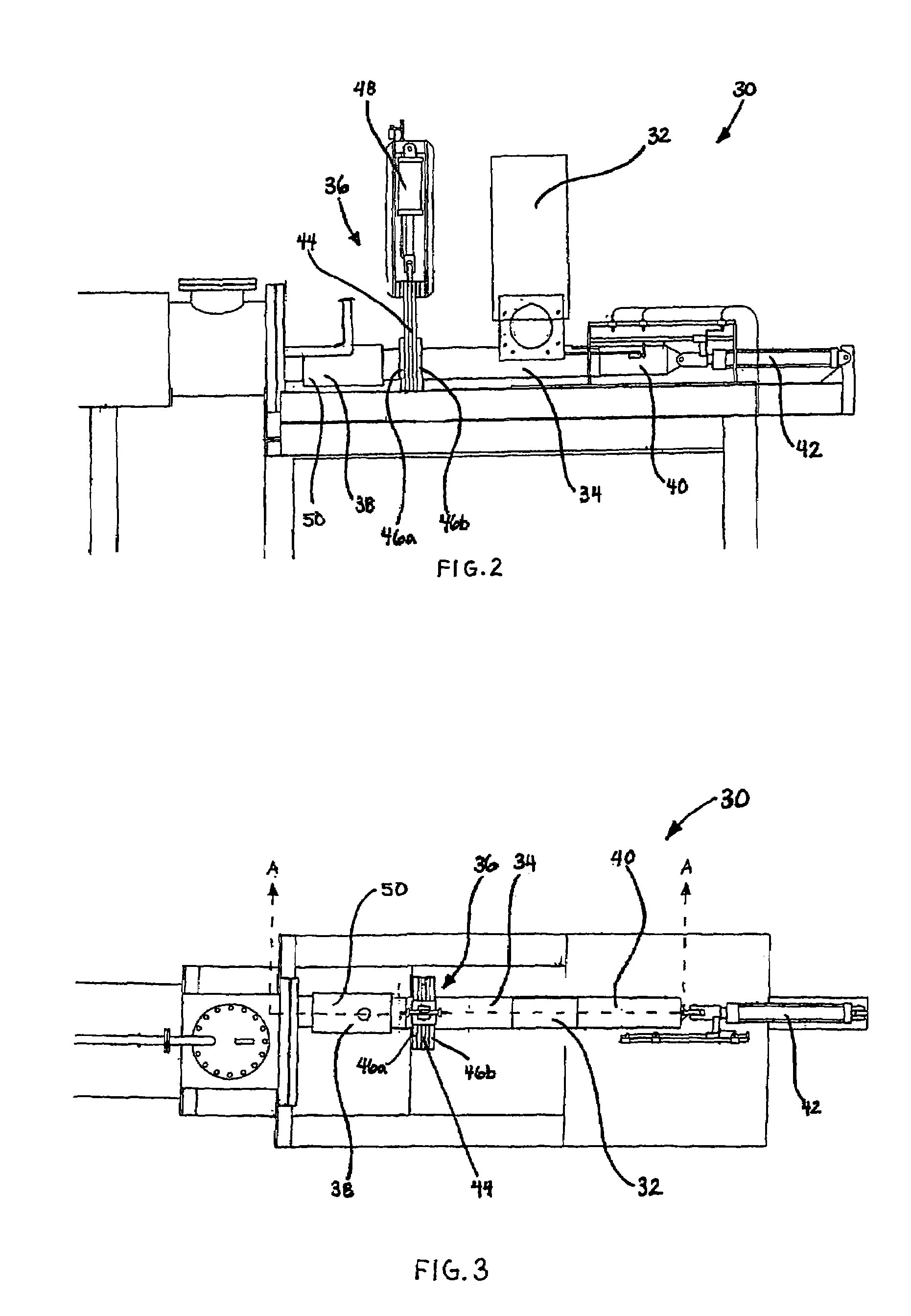System and method for processing waste on a continuous basis
a waste and continuous technology, applied in the direction of grain husking, combustion types, lighting and heating equipment, etc., can solve the problems of destroying the useful hemicellulose component of woody cellulose materials contained in solid waste, introducing harmful by-products and pollutants into the atmosphere, and the inconvenient incineration process
- Summary
- Abstract
- Description
- Claims
- Application Information
AI Technical Summary
Benefits of technology
Problems solved by technology
Method used
Image
Examples
Embodiment Construction
[0044]The present invention is a system and method for transforming solid waste into useful material. With reference to FIG. 1, an exemplary system 10 for processing solid waste on a continuous basis generally comprises the following: an infeed assembly 30, which may be used to continuously transfer waste from an environment having an ambient pressure and / or temperature to an environment having an elevated pressure and / or temperature; a metamorphic processing apparatus (MPA) 70, which makes use of elevated pressure and / or temperature to assist in processing waste; and an outfeed assembly 92, which may be used to continuously transfer product from an environment having an elevated pressure and / or temperature to an environment having an ambient pressure and / or temperature. Furthermore, it should be understood that these discrete components of the exemplary system, the infeed assembly, the MPA, and the outfeed assembly, may also be used separately to process material without departing ...
PUM
 Login to view more
Login to view more Abstract
Description
Claims
Application Information
 Login to view more
Login to view more - R&D Engineer
- R&D Manager
- IP Professional
- Industry Leading Data Capabilities
- Powerful AI technology
- Patent DNA Extraction
Browse by: Latest US Patents, China's latest patents, Technical Efficacy Thesaurus, Application Domain, Technology Topic.
© 2024 PatSnap. All rights reserved.Legal|Privacy policy|Modern Slavery Act Transparency Statement|Sitemap



